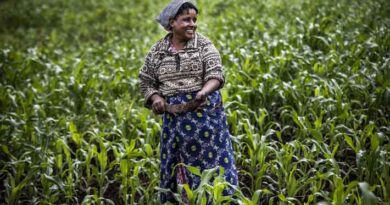Forestry Commission takes robust action to combat spread of tree disease
10 June 2022, UK: The Forestry Commission is urging woodland managers, landowners and the forestry industry to remain vigilant following further findings of Phytophthora pluvialis in areas across England.
The UK Chief Plant Health Officer has confirmed findings in the parts of the country following extensive surveillance activities by the Forestry Commission and other parts of the UK Plant Health Service.
Phytophthora pluvialis is a fungus-like pathogen known to affect a variety of tree species, including western hemlock, Douglas fir, tanoak and several pine species (in particular radiata pine). It is reported to cause needle cast (where needles turn brown and fall off), shoot dieback, and lesions on the stem, branches, and roots.
Phytophthora pluvialis has been detected on mature western hemlock and Douglas-fir trees at the affected sites, and has been confirmed as the direct cause of the observed symptoms.
Also Read: Crop Care Federation of India (CCFI) launches latest video on farmer welfare & training programs
Forestry Commission, Forest Research and the Animal and Plant Health Agency are continuing to conduct further surveillance and diagnostic analysis to understand more about the pathogen and ensure that any required control measures are swiftly undertaken to stop its spread. This includes extensive ground and aerial surveillance as part of a UK-wide survey, and comprehensive research and modelling to explore factors such as climatic and potential species susceptibility and to help inform the management response. The introduction and extensions of demarcated areas help to prevent the accidental movement of tree pathogens.
Nicola Spence, the UK’s Chief Plant Health Officer, said:
We are taking robust and swift action against the findings of Phytophthora pluvialis at these sites, as part of our well-established biosecurity protocol for tree pests and diseases.
I urge all sectors to support efforts to tackle this pathogen by checking the health of western hemlock and Douglas-fir trees. Key symptoms to look out for are lesions on the stem, branch or roots. Any sightings should be reported to the Forestry Commission via its TreeAlert online portal.
New plant health requirements introduced to combat further findings of the tree pathogen Phytophthora pluvialis
The Forestry Commission is urging woodland managers, landowners and the forestry industry to remain vigilant following further findings of Phytophthora pluvialis.
New measures in response to these findings include:
- A demarcated area was introduced in Cumbria following the identification of the pathogen in woodlands in the area. The relevant notice came into force on 27 January.
- Extensions to existing demarcated areas in Devon and Cornwall were made following further identifications of the pathogen in these areas. The relevant Notices came into force on Thursday 21 April.
- A demarcated area was introduced following the identification of the pathogen in woodlands in Surrey. The relevant Notice came into force on Thursday 21 April.
- Following further findings in Wales, a demarcated area was introduced in Gloucestershire and Herefordshire to combat any potential spread. The relevant Notice came into force on Thursday 21 April.
- A new demarcated area has been introduced following the identification of the pathogen in a woodland in Shropshire. The relevant Notice will come into force on Thursday 16 June.
- The Notice for Surrey has been revised to correct an error. The relevant Notice will come into force on Thursday 16 June.
For behind-the-scenes insight into the ongoing science, surveillance and eradication efforts controlling the spread of Phytophthora pluvialis, read this blog.















